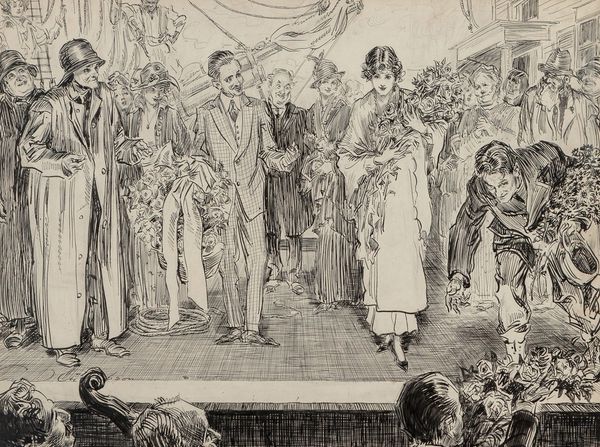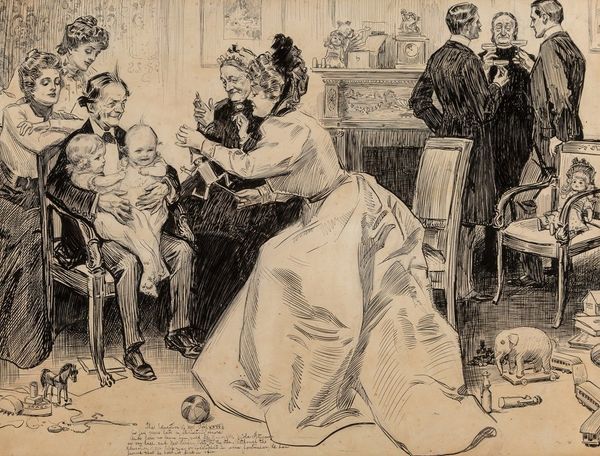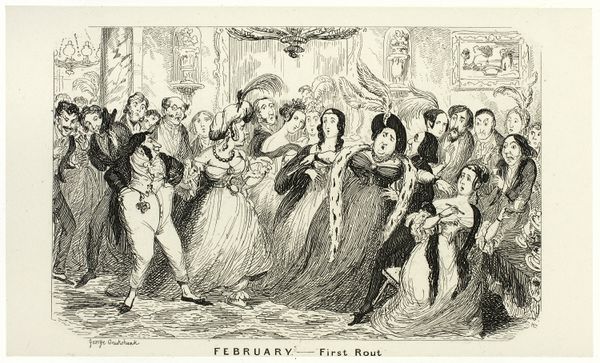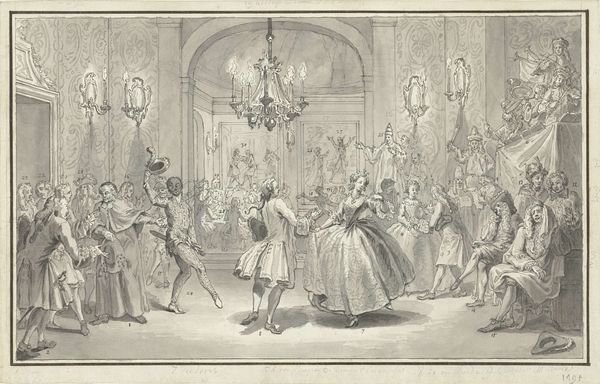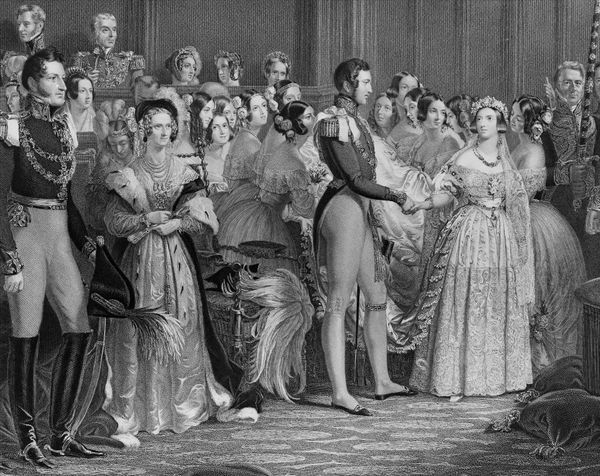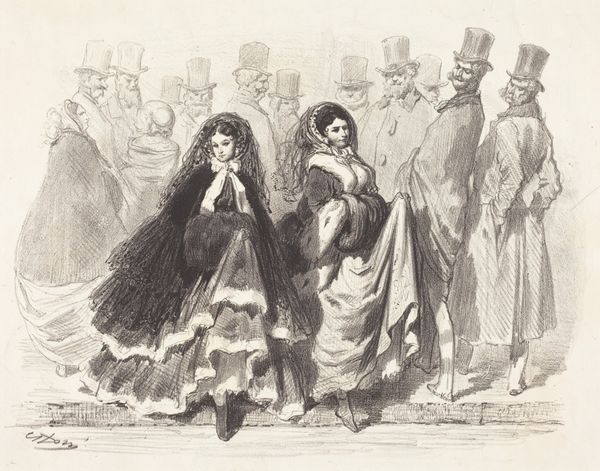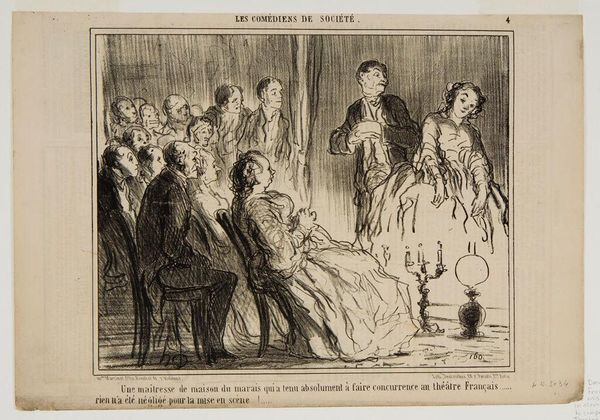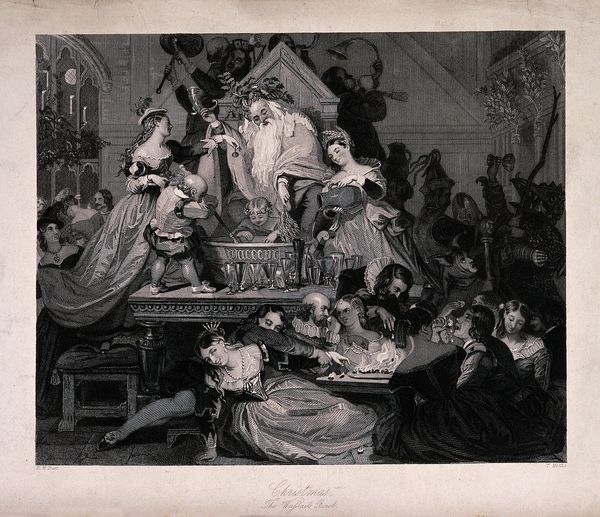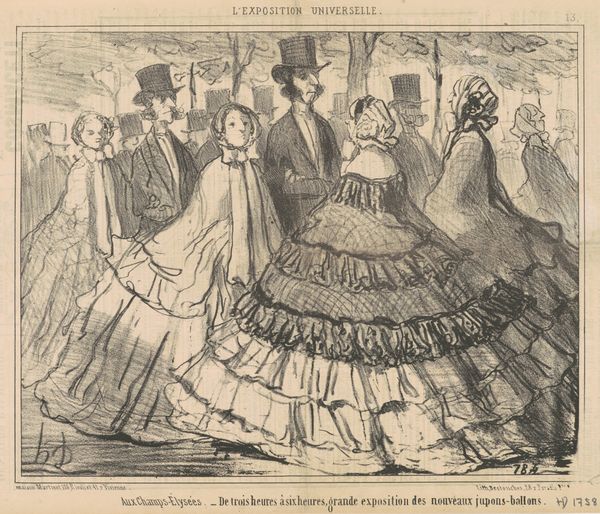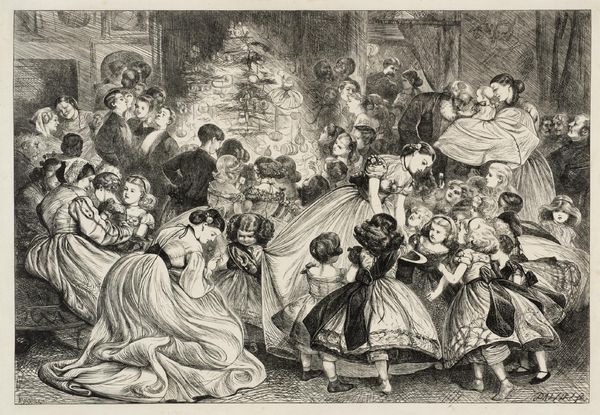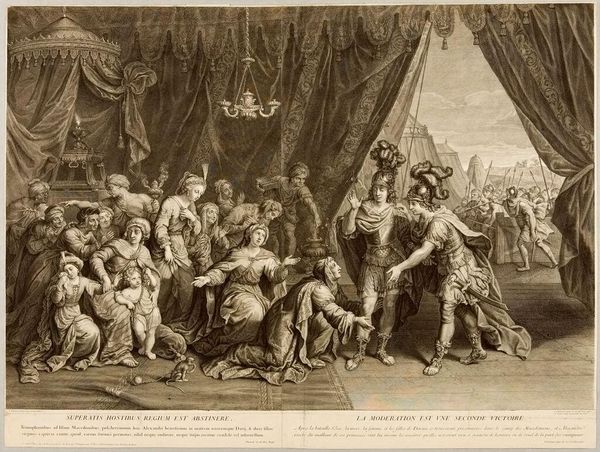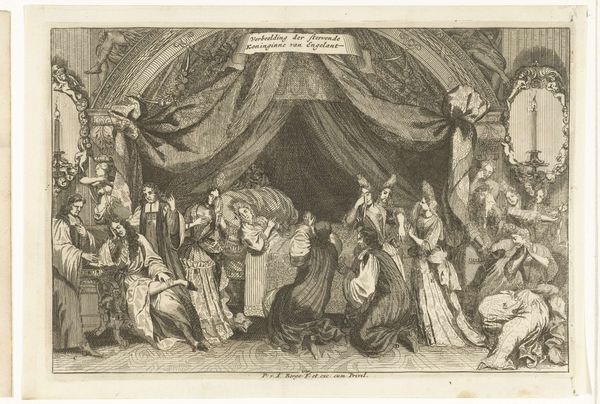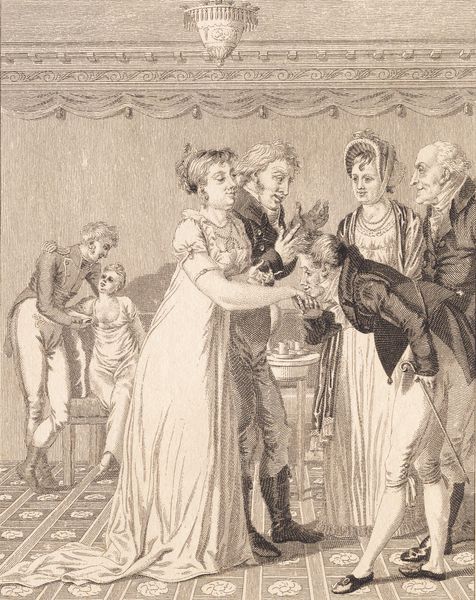
drawing, ink, pen
#
drawing
#
narrative-art
#
pen sketch
#
pencil sketch
#
ink
#
romanticism
#
pen-ink sketch
#
pen
#
genre-painting
Copyright: Public domain
Curator: Well, here we have Gustave Doré’s pen and ink drawing, "Cinderella." Editor: It's overwhelmingly intricate, isn't it? Like a swarm of meticulously rendered figures fighting for space. I see opulence and almost frantic energy, appropriate I suppose, given the fairy tale’s inherent drama. Curator: Absolutely. Considering the socio-political context of the fairy tale and how it was deployed, Doré likely understood it as a narrative of social mobility. The detail he puts into the costuming here, each stitch practically visible, signifies status and the material markers of belonging. The labour involved speaks volumes about class. Editor: I am curious about the actual labor that went into producing this drawing, it had to be printed to be consumed widely, right? I mean, look at those cross-hatching techniques—incredibly precise, like an etching. I’m interested in thinking about this image not just as “art,” but as reproducible and circulated widely. What class was consuming it? Was it reinforcing ideals, or simply for pleasure? Curator: That's a crucial question. Doré was a master of illustration. His work for books meant this Cinderella wouldn’t be confined to a gallery; it infiltrated homes and shaped public imagination, particularly of the Victorian era. These images become deeply ingrained in the social consciousness and become the accepted, authorized version of events. The grandeur served a clear propagandistic function, almost! Editor: A very astute point! Doré’s medium really impacts the dissemination and understanding of "Cinderella". The line becomes this almost authoritative stroke, setting the scene for these romanticized ideals and almost fetishizing the accoutrements of the upper crust. He's selling not just a story but an aspirational lifestyle made achievable through magical, external forces rather than systemic changes. Curator: Exactly. The scale of production allows for immense social and cultural influence. The image's existence hinged on his labor, the printing process, and its access to bourgeois audiences wanting their ideals reinforced, or disseminated, rather. Editor: It's incredible how examining medium and accessibility deepens the social weight of the image itself, versus solely judging artistic merit. It definitely makes me rethink my first impression. Curator: Indeed, recognizing the intertwined relationship between fairytale imagery, art production and consumer culture transforms our perspective of this Cinderella forever.
Comments
No comments
Be the first to comment and join the conversation on the ultimate creative platform.
